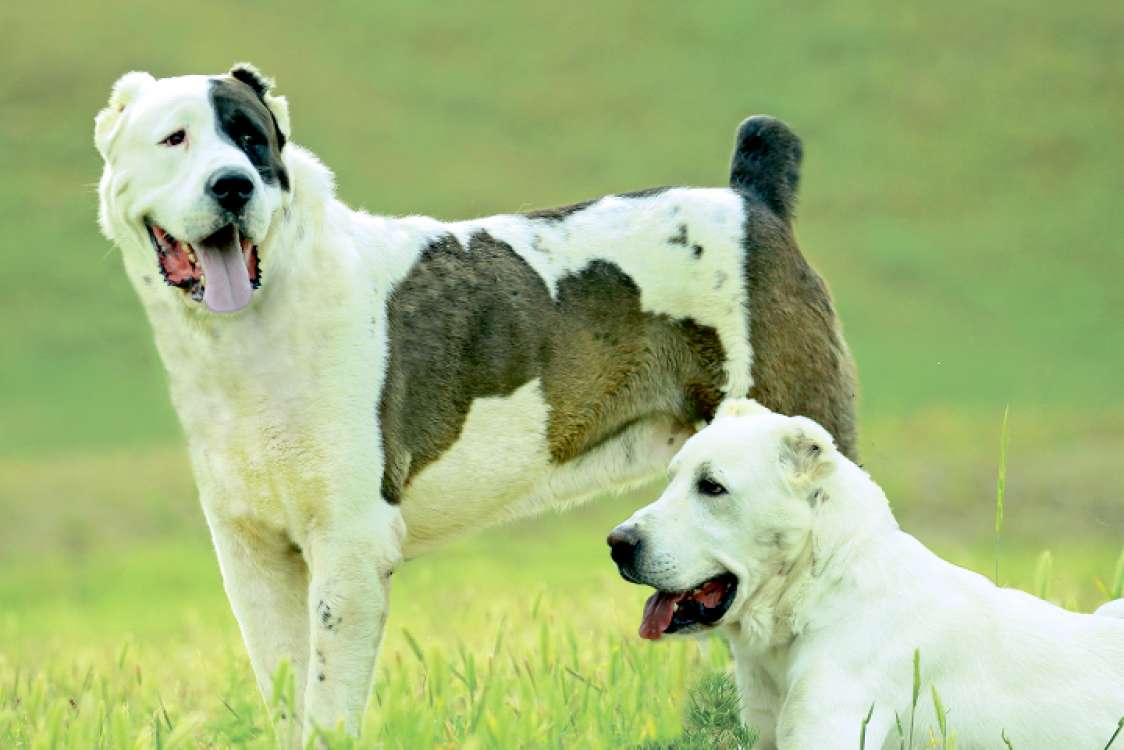

 1146
1146
Turkmen alabay not only recounts the origin and development of this well-known dog breed, one of the oldest breeds in the world, it also reveals the history of this breed as a cultural phenomenon. The Turkmen Alabay takes its place here among national symbols stretching back centuries, such as the Akhalteke horse, Turkmen carpets and melons. Each of these iconic features of Turkmen culture make up an important layer of national culture. They have become polyphonic images, representing harmony and beauty, as well as the material and spiritual values of the Turkmen people.
Although these brave dogs may look fierce, those who know them well, know that hidden behind their rough appearance is a tender heart requiring gentle care. Alabays are gentle with children, which allows them to become a true part of a family. They have no equal as guard dogs (Turkmen cattle herders are well aware of this) and will do their best to protect their owners and their home.
These traits emerged over thousands of years through selective breeding. The breed has several names; Turkmen Alabay, Central Asian shepherd and Turkmen wolf dog. According to the estimates of professional breeders, the origins of this breed are thought to date back to between three and six thousand years.
Archeologists in Turkmenistan have found ancient images of this trustworthy canine companion to shepherds. Terracotta figurines of dogs with cropped ears and tails were unearthed at famous archeological sites such as Altyn Depe and Gonur Depe (200NULL) from different periods.
Turkmen people hold dogs is high esteem. Evidence of this cultural reverence for the Alabay may be uncovered at the gravesite of an Alabay dog buried with ceremony, which was discovered in Margiana, the fifth cradle of human civilization and site of proto-Zoroastrian belief, according to archaeologists.
Described in flattering epithets and regarded as sacred in the Avesta, the dogs are considered to be close to human in intelligence. Sample evidence of their importance was uncovered in dog burials in necropolises in the country of Margush.
Archeologists believe that Alabay dogs were regarded as warriors and that the Margiana people buried them with great honour, like heroes, with the hope that they would be protected after death by their Alabay dogs.
A huge Alabay is depicted on one of the Parthian rhytons from old Nisa. Other Alabay sculptures, created in various artisanal centers and in different centuries are also in the collections of Ashgabat museums.
Among the recent finds unearthed at the medieval settlement of Dandanakan is a tiny faience statuette that features the distinctive characteristics of the Turkmen Alabay.
Today, it is one of the most popular breeds in the world. Europe has recently seen a growing interest in the Central Asian shepherd breed. The purity of the Alabay breed has been preserved in Turkmenistan through the work of dog breeders and thanks to the complete isolation of Alabays from other breeds.
Alabay dogs have been present in homes, kept for herding, and trained as guard dogs. The Turkmen shepherd breed is remarkable for its gentleness, calmness, and intelligence, as well as its fearlessness and independence. The Alabay fiercely protect their territory and respond bravely to threats.
Today, the Central Asian shepherd is one of the most sought after guard dog breeds.
 4524
4524
 3716
3716
 3663
3663
 13
13
 36
36
 33
33
 38
38



 307
307

 254
254

 424
424

 312
312


 79
79

 78
78

 79
79

 103
103
